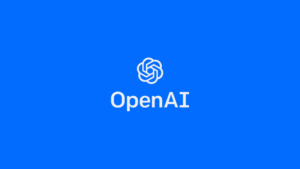OpenAI’s O3 Model Scores 85% on ARC-AGI Benchmark: What It Means for AI Progress
 Last month, OpenAI introduced its reasoning-focused O3 series of AI models, revealing impressive benchmark results during a live stream. While all scores highlighted significant improvements over the O1 series, one stood out: the O3 model achieved an 85% score on the ARC-AGI benchmark. This not only surpassed the previous best by 30% but also matched the average human score on the test.
Last month, OpenAI introduced its reasoning-focused O3 series of AI models, revealing impressive benchmark results during a live stream. While all scores highlighted significant improvements over the O1 series, one stood out: the O3 model achieved an 85% score on the ARC-AGI benchmark. This not only surpassed the previous best by 30% but also matched the average human score on the test.
Does This Mean O3 Matches Human Intelligence?
Despite the high score, equating O3’s intelligence with that of a human is premature. Without access to the model’s architecture, training techniques, or datasets—none of which have been disclosed—it’s difficult to draw definitive conclusions.
Insights Into OpenAI’s Reasoning-Focused Models
OpenAI’s O-series models, including O3, have not undergone significant architectural overhauls. Instead, they rely on fine-tuning to enhance capabilities. For example, the O1 models used a technique called test-time compute, allowing additional processing time to refine answers. Similarly, GPT-4o was a fine-tuned version of GPT-4.
Given that OpenAI is reportedly working on GPT-5, it’s unlikely that O3 features major architectural changes.
What Is the ARC-AGI Benchmark?
The ARC-AGI (Abstract Reasoning Corpus – Artificial General Intelligence) benchmark consists of grid-based pattern recognition tasks requiring spatial reasoning and logical aptitude. While the benchmark relies on high-quality reasoning-focused datasets, achieving a high score isn’t straightforward—older models only managed a 55% top score before O3’s 85%. This leap suggests that OpenAI has employed refined techniques or algorithms to enhance reasoning.
Is O3 Close to AGI?
It’s unlikely that O3 has reached artificial general intelligence (AGI) or human-level cognition. Achieving AGI would end OpenAI’s partnership with Microsoft, as per their agreement, and experts like Geoffrey Hinton assert that AGI is still years away. Additionally, such a monumental breakthrough would undoubtedly be publicly and explicitly announced.
More plausibly, O3 represents a focused improvement in pattern-based reasoning, likely achieved through refined training methods or expanded datasets, as suggested in a PTI report. However, this enhancement appears limited to specific tasks and doesn’t indicate a broader leap in the model’s overall intelligence.





